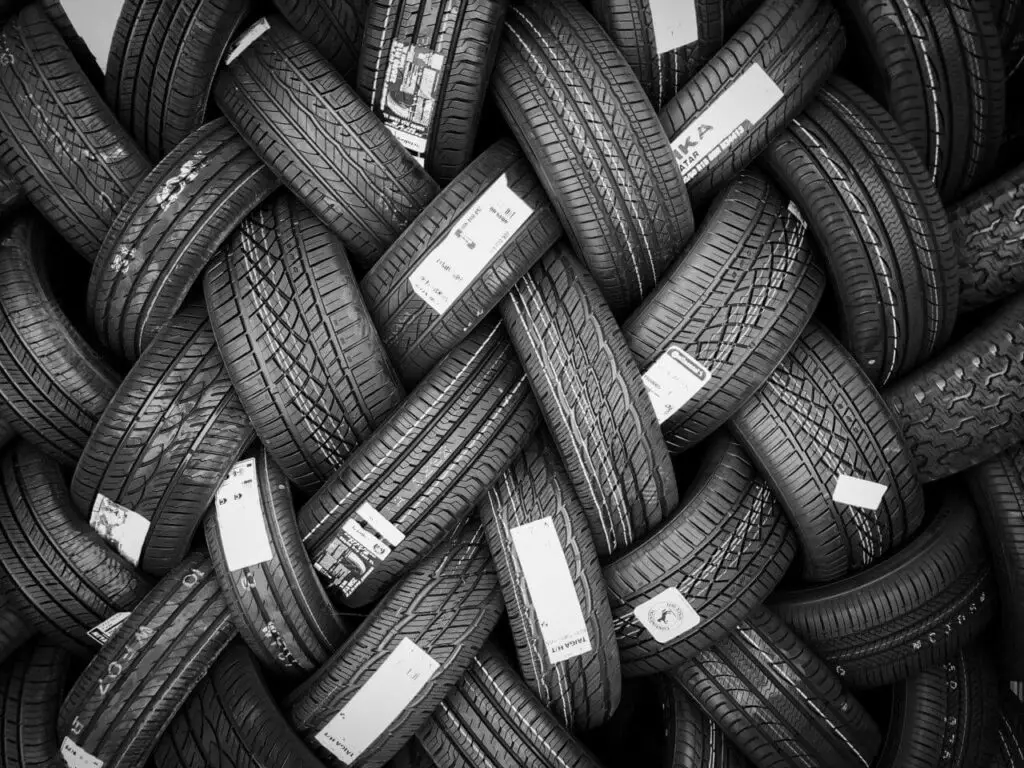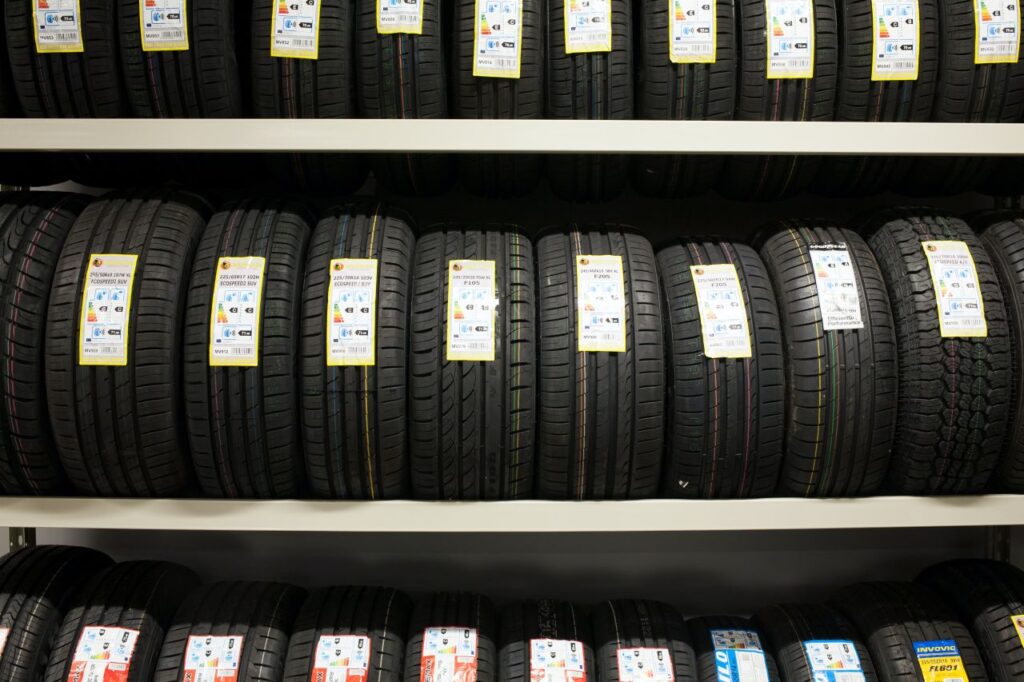Finding the correct tyre size is essential for maintaining your vehicle’s performance, handling, and safety.
Whether replacing old tyres or upgrading, there are multiple ways to determine the right size for your vehicle.
Here, we cover key methods, essential terms, and factors when choosing tyres that best suit your needs.
Let's get straight to the point
Finding the correct tyre size is essential for your vehicle's performance, handling, and safety. Start by checking the owner’s manual or door jamb label for the recommended size, load index, and speed rating.
You can also read tyre sidewall markings for details or use tyre size calculators to explore compatible options.
Consult a tyre professional to ensure compatibility with suspension and transmission requirements when in doubt.
Consider your driving conditions (like all-season, winter, or off-road) and maintain proper tyre pressure and rotation for longevity.
Prioritise load index, speed rating, and tread pattern to make an informed choice for a smoother, safer ride.
1. Check The Owner’s Manual And Door Jamb

One of the simplest ways to find the right tyre size is to check your vehicle’s owner’s manual. The manual includes information specific to your vehicle’s requirements, including the recommended tyre size, load index, and speed rating.
- Locate the Tyre Size Label: This label can be found in the door jamb on the driver’s side. It includes important details about tyre width, aspect ratio, and rim diameter.
- Follow Manufacturer Specifications: The tyre size listed is designed for optimal safety and handling. Changing tyre size can impact these factors, so consider consulting a tyre professional if you vary from the recommendations.
2. Read The Tyre Sidewall Markings
If you can’t find the manual or label, examine the markings on the tyre sidewall, which provide all the necessary details about size and type.
- Width: The first three-digit number (e.g., P225/70R16) represents the tyre's width in millimetres from sidewall to sidewall.
- Aspect Ratio: The following number (e.g., 70) is the aspect ratio, showing the height of the sidewall as a percentage of the width.
- Construction Type: The letter "R" typically indicates radial construction, the most common type for passenger tyres.
- Rim Diameter: The next two digits (e.g., 16) indicate the rim diameter in inches.
- Load Index and Speed Rating: The final numbers and letters (e.g., 91S) show the load index and rating, essential for choosing tyres that can safely carry your vehicle’s load and operate at specific speeds.
3. Use A Tyre Size Calculator
For those considering a size change, online tyre size calculators can be helpful. These calculators allow you to enter your vehicle’s make and model to generate compatible sizes.
- Verify Compatibility: Enter your car’s existing tyre size or vehicle model. The calculator will list compatible sizes, making it easier to compare options.
- Compare Speed Rating and Load Index: The calculator also shows variations in load index and speed ratings, ensuring you choose tyres suited to your vehicle’s design.
- Explore Alternate Sizes: This tool can be valuable if you want to increase the tyre width or change the aspect ratio while maintaining proper overall diameter.
4. Consult A Tyre Professional
If you’re uncertain about selecting the right tyre size, seeking help from a tyre expert can make the process easier. Professionals provide insights into factors that affect tyre choice beyond just size.
- Check Compatibility with Suspension and Transmission: Changes in tyre size can affect more than just handling; they may influence suspension or transmission performance.
- Confirm Load and Speed Requirements: Professionals ensure that the tyre’s load capacity and speed rating are within legal and safety standards for your vehicle.
- Assess Driving Habits: Experts consider how you use your vehicle—whether for commuting, towing, or off-roading—and recommend tyres accordingly.
5. Consider Metric And Flotation Sizing For Special Vehicles
Certain vehicles, like SUVs and off-road trucks, may use flotation sizing or LT-metric sizing, which differs from standard passenger tyre sizes.
- Metric Sizing: This system includes P-Metric and LT-Metric classifications. P-metric tyres are designed for passenger vehicles, denoted with a "P" before the size (e.g., P225/70R16). LT-Metric (e.g., LT245/75R17) tyres are built for light trucks and offer greater durability and load capacity.
- Flotation Sizing: Used for some off-road tyres, flotation sizes (e.g., 33x12.50R15) are measured in inches rather than millimetres and are tailored for heavy-duty applications.
- Temporary and Trailer tyres: Tyres marked with a "T" or "ST" are used for spare or trailer tyres, respectively. They’re built for limited use and aren’t suitable for regular driving.
6. Understand Load Index And Speed Rating Requirements
The load index and speed rating are critical for safety. These factors should match the vehicle’s original specifications or be selected according to any intended performance changes.
- Load Index: This number (e.g., 91) shows the maximum weight a tyre can support. Heavier vehicles, such as SUVs and trucks, require higher load indices.
- Speed Rating: The speed rating (e.g., S) reflects the tyre’s safe operating speed. Tyres with a higher speed rating are often better for performance vehicles.
- Check Compatibility in Mixed Use: If replacing only some tyres, ensure all tyres have the same or similar speed ratings to avoid performance and safety issues.
7. Evaluate Tyre Width And Aspect Ratio For Performance Needs
Adjusting the tyre width or aspect ratio can influence handling, grip, and ride comfort. However, these changes must be balanced to avoid issues with fit or suspension.
- Wider tyres: Wider tyres offer more grip and handling, making them ideal for performance vehicles, though they may increase road noise and fuel consumption.
- Lower Aspect Ratio: Lower ratios (e.g., 50 or 55) improve handling but may make the ride firmer. These are often used in sports or high-performance vehicles.
- Balance Width and Ratio: When changing tyre width, it’s essential to adjust the aspect ratio to maintain the correct overall diameter. This helps avoid misalignment in the speedometer and odometer readings.
8. Use Tyre Selector Tools On Retail Websites
Many online retailers offer tyre selector tools that help you narrow down the best tyre options for your vehicle.
- Enter Vehicle Information: Inputting your vehicle’s make, model, and year will yield a list of tyres suited to your car’s specifications.
- Filter by Performance Needs: Selector tools filter options based on categories like all-season, off-road, or winter tyres.
- Compare Tread Life and Reviews: Retail sites often include detailed reviews and tread life information, allowing you to select tyres with the longevity and features you want.
9. Consider Tyre Construction Type: Radial Vs. Bias Ply
Tyres can be either radial or bias-ply in construction, and each type offers unique advantages based on use.
- Radial Tyres: These are common for passenger vehicles and are indicated by the letter R. Radial tyres provide better stability, fuel economy, and longevity, making them suitable for regular driving.
- Bias-Ply Tyres: Less common in passenger vehicles, bias-ply tyres are often used in heavy-duty or off-road applications. They have thicker sidewalls, offering greater durability but at the cost of ride comfort.
- Compatibility with Vehicle Use: Ensure that all tyres on a vehicle match in construction type. Mixing radial and bias-ply tyres is unsafe for regular use.
10. Choose Tyres Based On Driving Conditions

Different tyres perform better under specific driving conditions. Choose tyres that match how and where you drive:
- All-Season Tyres: These tyres are designed for year-round use and provide moderate grip and longevity.
- Winter Tyres: Built for snow and ice, winter tyres have special rubber compounds and tread patterns for improved grip in cold temperatures.
- Performance Tyres: High-performance tyres offer better grip and handling for sporty driving but may wear faster.
- All-Terrain Tyres: These are suitable for both on- and off-road driving, making them ideal for trucks and SUVs used for camping or rugged terrain.
11. Use Tread Pattern And Tread Depth As A Factor
Tyre tread patterns affect handling, grip, and noise. Understanding different tread types can help in selecting tyres that suit your needs:
- Symmetrical Tread: Provides even wear and is quiet, suitable for everyday commuting.
- Directional Tread offers enhanced handling and is ideal for wet conditions. However, directional tyres are only mountable in one direction.
- Asymmetrical Tread: Common in performance tyres, it combines wet-weather grip and cornering stability.
12. Consider Tyre Maintenance And Replacement Intervals
Keeping tyres in good condition ensures safety and longevity. Regular maintenance practices are essential:
- Check Tyre Pressure: Low tyre pressure can lead to excessive wear. Use a gauge to ensure your tyres are inflated to the manufacturer’s specifications.
- Rotate Tyres: Rotating tyres every 10,000 km helps prevent uneven wear and extends lifespan.
- Replace worn tyres promptly. Tyres with shallow tread lose traction, increasing the risk of skidding. Check tread depth regularly to ensure it’s within legal and safety limits.
Conclusion
Selecting the right tyre size is essential in ensuring your vehicle’s safety, performance, and handling.
By referencing the owner’s manual or door jamb label, reading sidewall markings, and using online tools or consulting tyre professionals, you can make an informed choice suited to your needs.
Factors such as load index, speed rating, construction type, and tread pattern all affect your vehicle’s overall functionality.
Prioritise routine maintenance and tread checks to extend tyre life and maintain optimal performance.
With the right tyre selection, you’ll enjoy a smoother, safer driving experience tailored to your unique driving conditions and requirements.
FAQs About Tire Size
First, consult your owner's manual or the placard on the driver's side doorjamb to find the recommended tyre measurements. The label will look something like this: P215/60R16 94T.
The first part of the label—P215/60R16—refers to the tyre's various size measurements, such as width and diameter. Next, the 94 indicates the load index, which is how much weight each tyre can support. Finally, the T is the speed rating, the tyre's maximum speed about the load index.
You should match the tire's size measurements, but you have some flexibility to go higher with the load index and speed rating.

